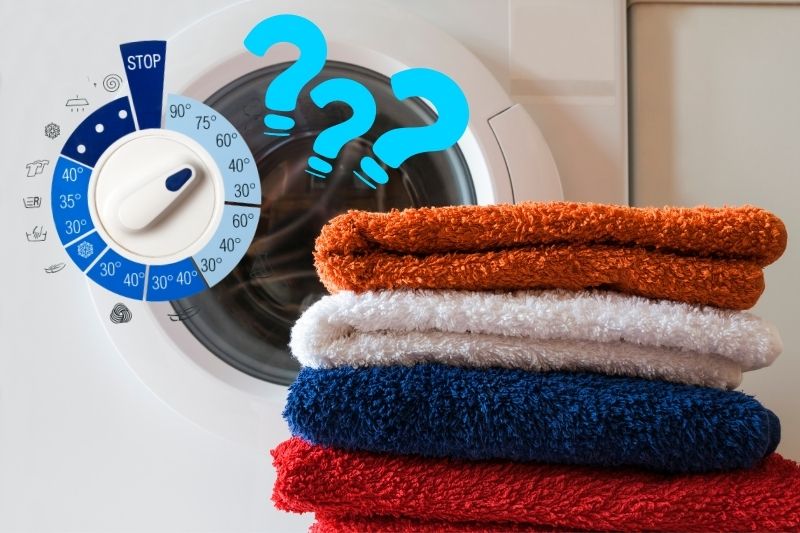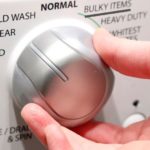Washing towels may seem like an intuitive process, after all, you just pop them in the washing machine and go, right? Not exactly!
Many of us have never actually considered how we wash our towels, but there are specific steps to follow to keep your towels looking good, smelling good and bacteria-free.
Read on to find out which setting you should use on your washing machine for towels and what else you need to take into account.
Which Setting Should You Choose for Your Towels?
Washing white and coloured towels is mostly the same process with a couple of small differences.
It makes sense to wash your whites and darks separately, especially because towels are made to be absorbent so white towels can easily become dingy.
What do white and coloured towels have in common?
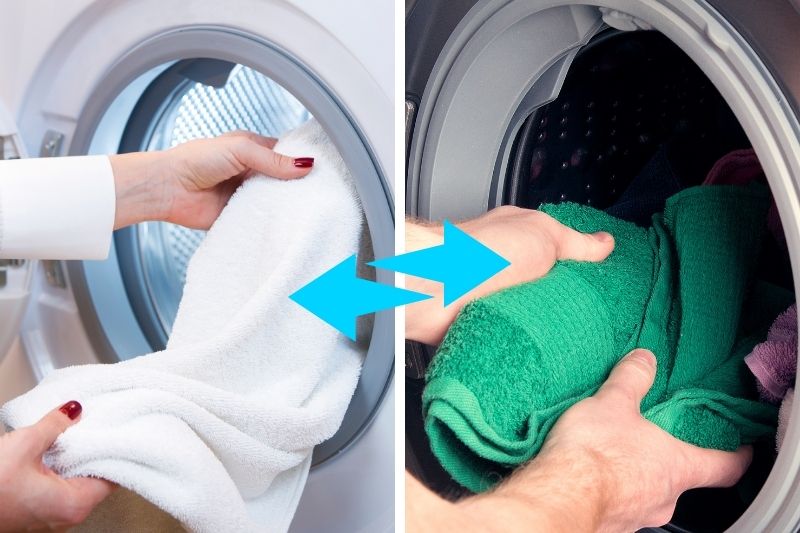
Both whites and darks can be washed on a normal cycle. They don’t need a special or delicate programme. However, if your washing machine has a large items/bulky setting, this is great for towels. Ideally, they should be washed for a longer cycle with a fast spin speed .
Only wash towels together and avoid adding clothes to your load. Towels have specific wash needs which might not work for your clothing.
Plus, even though they are all getting cleaned in the washing machine, it’s still a good idea to keep clothes and towels separate to avoid transferring bacteria.
If you want to keep your towels soft and fluffy, skip the fabric softener and opt for vinegar instead. This may seem counterproductive as fabric softener is meant to make your washing soft, but it can build up on the absorbent fibres and leave a residue.
Add fabric softener every 3-4 washes or add about half the recommended amount and add half a cup of vinegar too.
In the same vein, you can use less detergent as it can also build up on towels. If you have more expensive, hotel-quality towels, it’s a good idea to opt for a mild detergent.
Where does the washing process differ with white towels and colours?

The temperature of the water will depend on whether you are washing white towels or colours. Coloured towels should be washed in warm water, around 40 °C is ideal, as anything hotter will cause the colours to bleed and make them grubby and faded.
White towels can be washed on a hotter temperature as this will be more effective in removing dirt and stains which show up more prominently on white items.
If your towels are looking a bit grubby or smell a little musty, you can use bleach to give them a thorough clean. However, colours will require a colour-safe bleach whereas you shouldn’t use a chlorine-based bleach on white towels as this can cause discolouration.
How to Get Towels Extra Fluffy
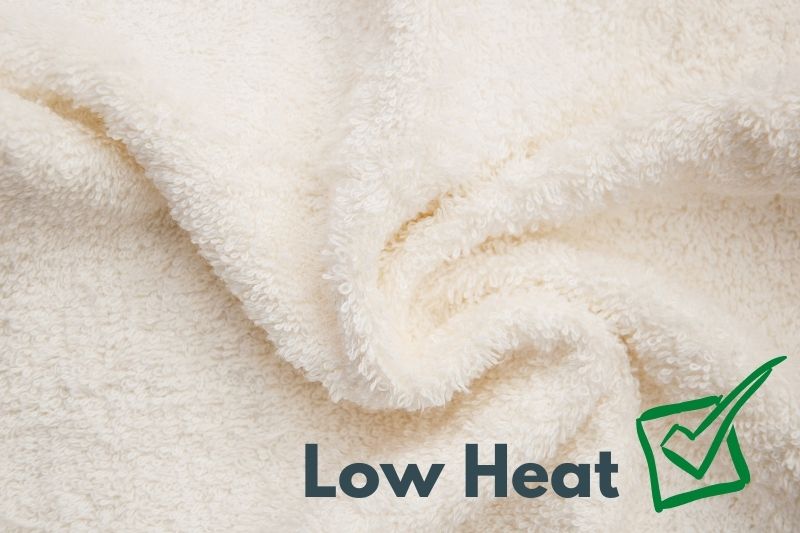
Apart from using less detergent and replacing fabric softener with vinegar, there are a couple of other tips for keeping your towels fluffy.
Firstly, as soon as they come out of the wash, shake them a little to air out the fibres and remove any excess moisture.
Hanging them to dry on a clothing line can make them stiff, so instead, dry them on a low heat in a tumble dryer. For extra fluffiness, add some wool balls to the dryer.
How Often Do I Need to Wash My Towels?
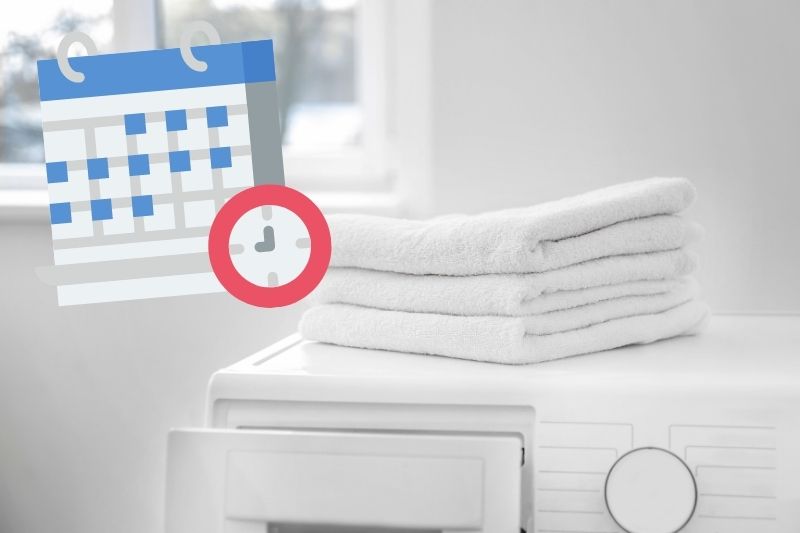
As a general rule of thumb, it’s recommended to wash your bath towels every 3-5 uses. This may seem like a lot, especially since we use them after cleaning ourselves, but don’t forget bodily fluids and products, such as makeup, can build up and create a breeding ground for bacteria.
If your towels are in a well-ventilated area and can dry quickly, you can wash them around every five uses. If not, consider washing them every three uses to avoid mildew.
Hand towels should be washed even more often, around every 2-3 days.

In The Wash is your guide to the best laundry and cleaning products, tips and tricks. Our mission is to solve the UK’s cleaning and laundry dilemmas!
